
Opening February 7, 2020
Darya von Berner “Thinking like a deer” (Untitled (10.C.R.) Acryl on linen, 1996. 300 x 200 cm. Februray 7, Read more…


Darya von Berner “Thinking like a deer” (Untitled (10.C.R.) Acryl on linen, 1996. 300 x 200 cm. Februray 7, Read more…

Francesca Thyssen-Bornemisza hosts this conversation that departs from her and José Luis de Vicente’s report on their participation on the Read more…

At Caixa Forum the Panel Art for Change suppoted by Schneider Electric Foundation organized by Alice Audouin, the president of Read more…
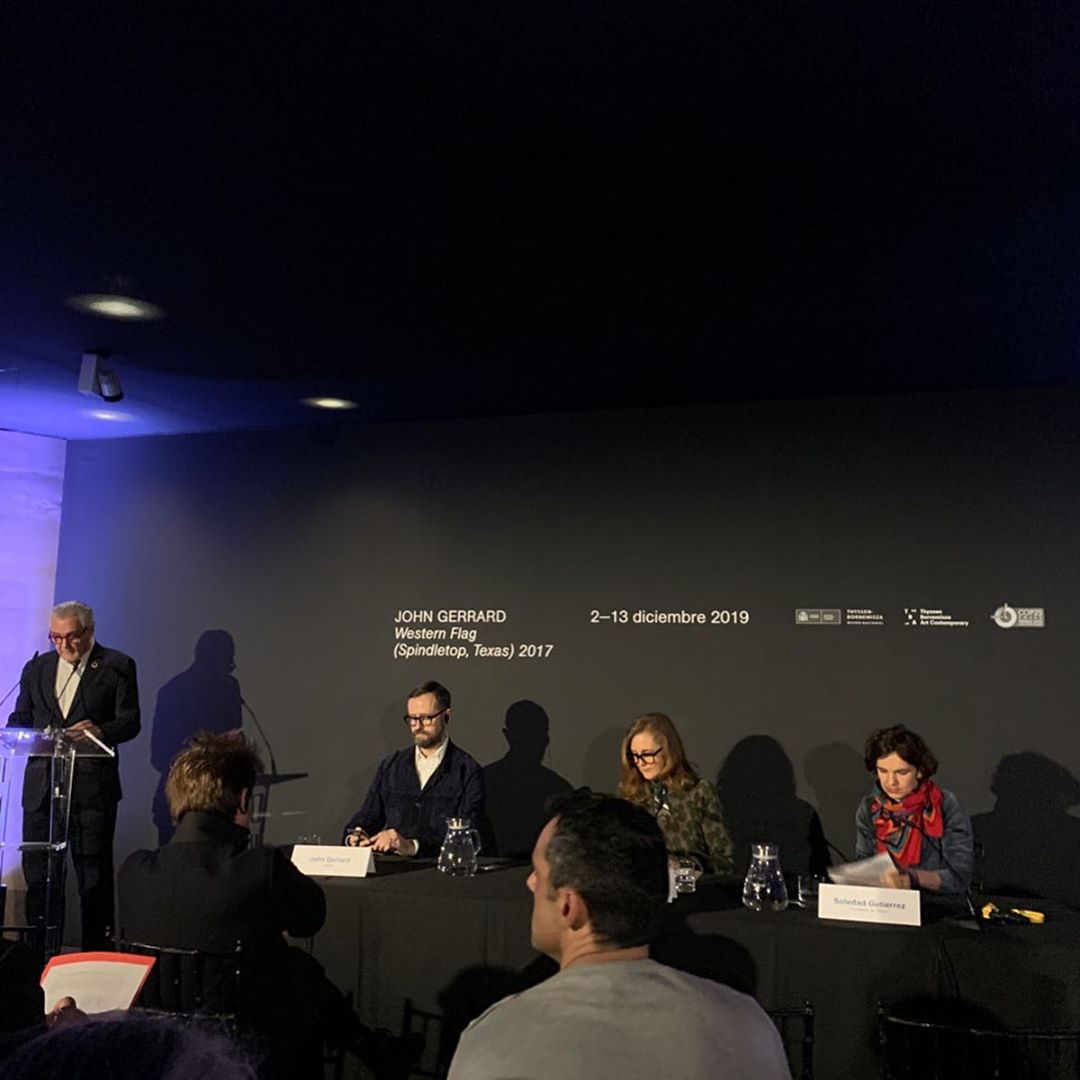
Francesca Thyssen-Bornemisza hosts this conversation that departs from her and José Luis de Vicente’s report on their participation on the official working sessions at COP25. This conversation addresses how art is an active tool for fighting climate change.
Participants: Francesca Thyssen-Bornemisza, Founder and Chairwoman TBA21; José Luis de Vicente, curator and researcher; Alexandra Daisy Ginsberg, artist; and John Gerrard, artist.
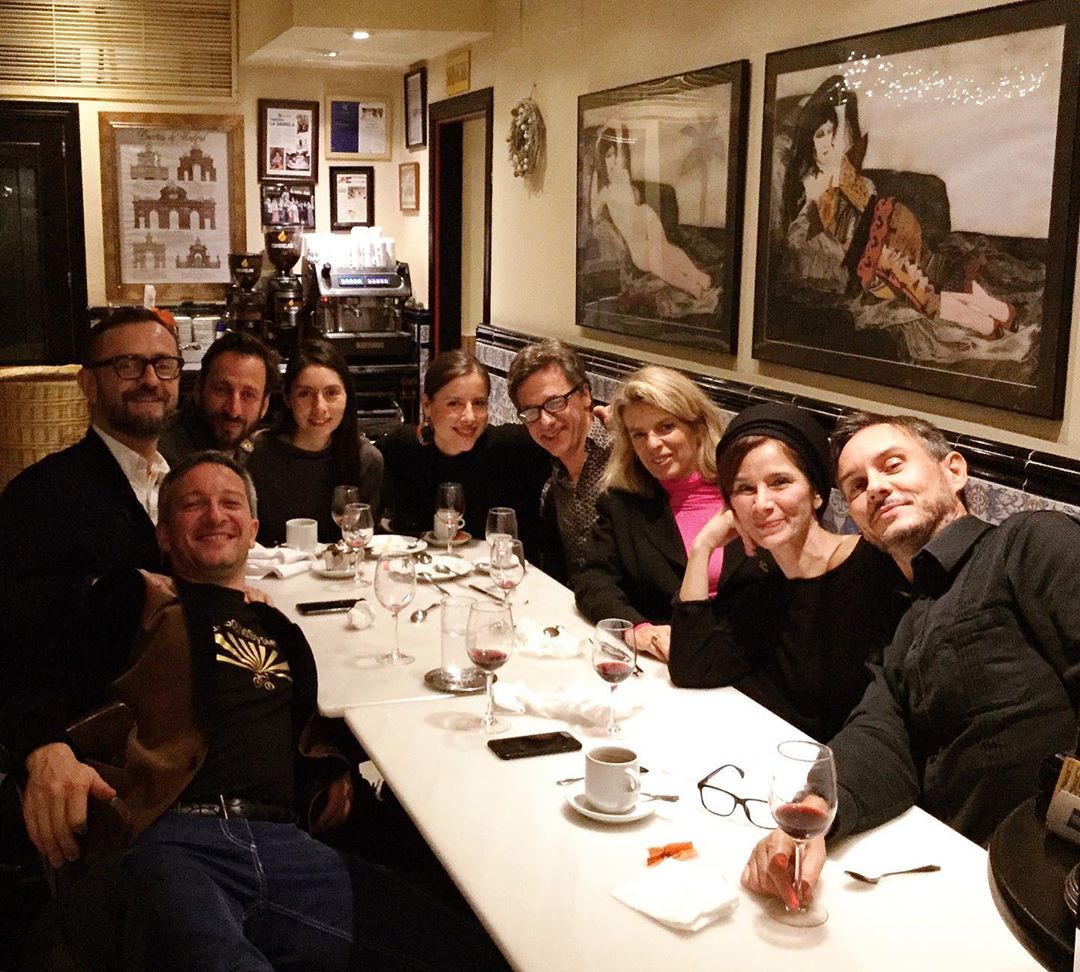
During the weather conference COP25 Alice @alice.audouin invited Michael Pinsky @michael_pinsky , John Gerrard @johngerrard.inst , Fernando García Dory @fer_dory, Cédric Carles and other friends all aware that in a finite world we cannot grow indefinitely
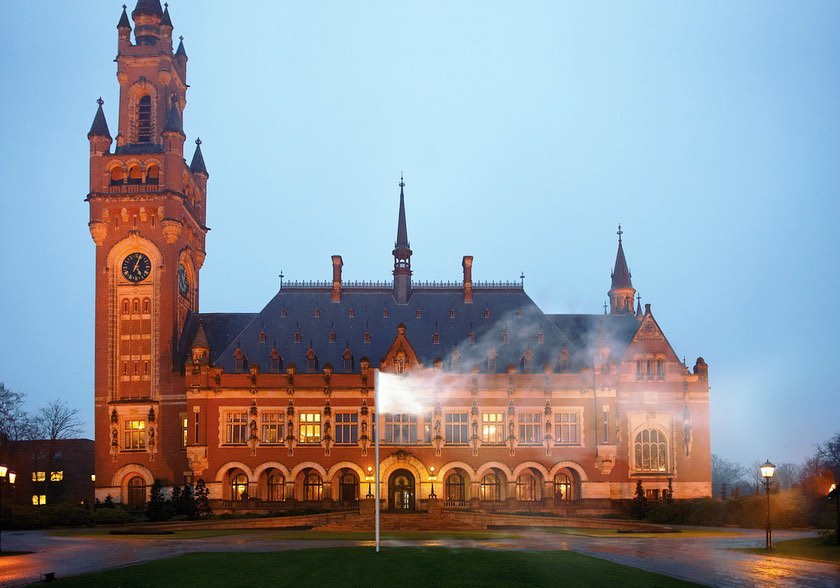
On the occasion of the Climate Change Conference @cop25_madrid from December 2 to 13, 2019, artists explore the impact of climate change. Ten years ago, in 2009, Darya von Berner created in Madrid “Universal Cloud Flag” a white flag of minute water drops, like the clouds that nourish and sustain life. Shortly after she carried out this idea that she patented, manufactured, and installed it in front of The Peace Palace in The Hague in 2012. The cloud flag was emitted from the top of a steel mast, using fog pressure to spray water in suspension into the atmosphere.

Unique Multiples @unique.multiples is pleased to present The Last Illusion, a new sculptural edition made from one kilo of pure gold by Madrid-based conceptual artist Darya von Berner. This holographic, mixed media work features a cast sculpture of golden shit displayed within a custom holographic vitrine, which through its own visual alchemy renders the precious heavy metal into a hovering, ghostly apparition.
Following in the tradition of ‘épater le bourgeois,’ or abject works of art such as Maurizio Cattelan’s America (2016), an 18-karat gold toilet, and Piero Manzoni’s seminal work Artist’s Shit (1961), The Last Illusion continues this line of inquiry, questioning how the value of art is derived, and juxtaposing the symbolic with the tangible, the abstract with the real.

Lupus Viator, 2000 – Asunción, Paraguay⠀
Darya von Berner⠀
⠀
AECID, Centro Cultural de España@juandesalazarpy⠀
Asuncion, Paraguay, 2000⠀
Audio installation, 200 mirrors, 100 books Lupus Viator⠀
Photo: Gabriela Zucolillo⠀
⠀
The artist invited a number of Paraguayan artists to collaborate in this presentation. The intention was to collectively engage in the meaning of Lupus Viator with the outcome of a sound work. Instead of turning reality into art, art became reality.⠀
⠀
Director: Lilo Acebal⠀
⠀
Audio installation, 200 mirrors, 100 books Lupus Viator⠀
Photo: Gabriela Zucolillo⠀
⠀
The artist invited a number of Paraguayan artists to collaborate in this presentation. The intention was to collectively engage in the meaning of Lupus Viator with the outcome of a sound work. Instead of turning reality into art, art became reality.⠀
⠀
Director: Lilo Acebal⠀
⠀
⠀
The project Lupus Viator (latin: wolf walking) began as a series of monumental painted installations of an ephemeral nature and realised in situ. Later the project continued to evolve over a period of 7 years. It travelled to 7 different countries worldwide. ⠀
Taking into consideration its extensive duration, as well as its territorial movements, from country to country, Lupus Viator can be understood almost like a mythical pilgrimage, which covers the trails and places, where wolves have formerly roamed in abundance, before the species has widely become extinct.⠀

Lupus Viator, 1999 – Lima, Peru⠀
Darya von Berner⠀
⠀
AECID, Centro Cultural de España⠀
@ccelima⠀
⠀
Video, 200 mirrors, 100 books Lupus Viator⠀
Video duration: 0:43 min⠀
Photo: Daniel Thissen⠀
⠀
Is a collaboration, with a group of local Peruvian artists, Los Aguaitones. For this work the monumental wolf transformed into a multimedia installation, along with the presentation of the artist book Lupus Viator. The closed circuit works aim to observe the communication between all elements of the system, like the public awareness of this process.⠀
⠀
Curated by: Teresa Velázquez Cortés⠀
⠀
Many thanks to: José Carlos Mariátegui⠀
⠀
⠀
The project Lupus Viator (latin: wolf walking) began as a series of monumental painted installations of an ephemeral nature and realised in situ. Later the project continued to evolve over a period of 7 years. It travelled to 7 different countries worldwide. ⠀
Taking into consideration its extensive duration, as well as its territorial movements, from country to country, Lupus Viator can be understood almost like a mythical pilgrimage, which covers the trails and places, where wolves have formerly roamed in abundance, before the species has widely become extinct.⠀

Lupus Viator, 1996 – Internet⠀
Darya von Berner⠀
⠀
World Wide Video Festival⠀
The Hague, Neatherlands⠀
Collaboration and Production: Teknoland / David Cantolla and Luis Cifuentes⠀
Foto: Erica Dines⠀
⠀
⠀
The project Lupus Viator (latin: wolf walking) began as a series of monumental painted installations of an ephemeral nature and realised in situ. Later the project continued to evolve over a period of 7 years. It travelled to 7 different countries worldwide. ⠀
Taking into consideration its extensive duration, as well as its territorial movements, from country to country, Lupus Viator can be understood almost like a mythical pilgrimage, which covers the trails and places, where wolves have formerly roamed in abundance, before the species has widely become extinct.⠀

Lupus Viator, 1996 – Atlanta, USA⠀
Darya von Berner⠀
⠀
Nexus Contemporary Art Centre⠀
Wall painting and objects, performance⠀
⠀
⠀
Simultaneously with the Olympic Games of Atlanta 1996, a Cultural Olympiad took place. For this Cultural Olympiad a representative artist for each continent was selected. Darya von Berner represented Europe with her project Lupus Viator, which was exhibited at the Atlanta Contemporary Art Centre (Nexus Press International Program).⠀
⠀
⠀
The project Lupus Viator (latin: wolf walking) began as a series of monumental painted installations of an ephemeral nature and realised in situ. Later the project continued to evolve over a period of 7 years. It travelled to 7 different countries worldwide. ⠀
Taking into consideration its extensive duration, as well as its territorial movements, from country to country, Lupus Viator can be understood almost like a mythical pilgrimage, which covers the trails and places, where wolves have formerly roamed in abundance, before the species has widely become extinct.⠀
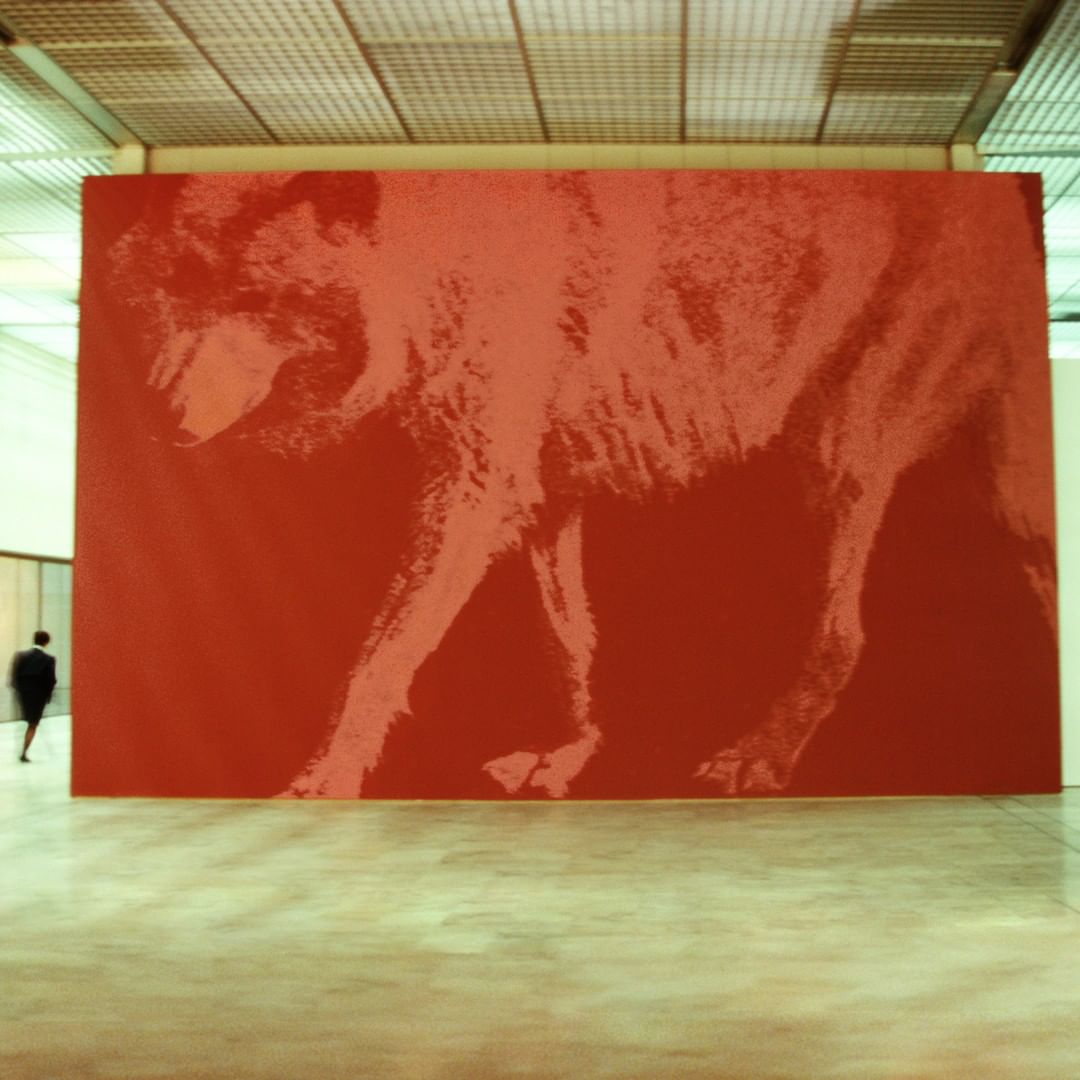
Lupus Viator, 1994 – Madrid, Spain⠀
Darya von Berner⠀
⠀
Museo de Arte Contemporáneo⠀
⠀
Wall painting⠀
Foto: Joaquín Cortes⠀
⠀
In the context of the group show “Confrontaciones (los entornos de la imagen)”, the ephemeral painting Lupus Viator, acquired monumental proprtions and covered the entirety of a wall at the museum of Anthropology in Madrid.⠀
⠀
Curators: Martín Bartolomé and Félix Guisasola⠀
Sponsor: Ministerio de Asuntos Sociales⠀
In collaboration with Ministerio de Cultura⠀
⠀
The project Lupus Viator (latin: wolf walking) began as a series of monumental painted installations of an ephemeral nature and realised in situ. Later the project continued to evolve over a period of 7 years. It travelled to 7 different countries worldwide. ⠀
Taking into consideration its extensive duration, as well as its territorial movements, from country to country, Lupus Viator can be understood almost like a mythical pilgrimage, which covers the trails and places, where wolves have formerly roamed in abundance, before the species has widely become extinct.
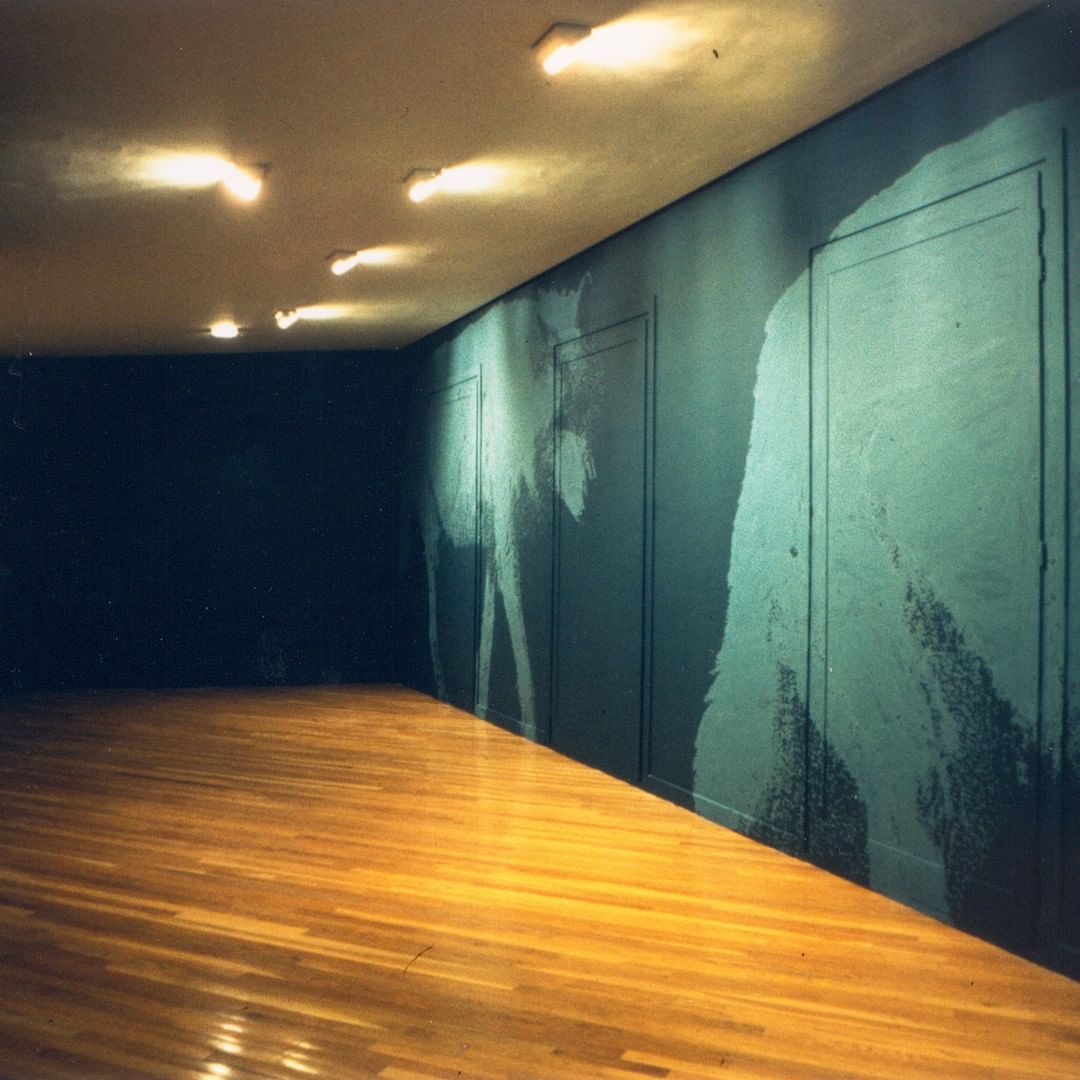
Lupus Viator, 1994 – Zaragoza, Spain⠀
Darya von Berner⠀
⠀
Galería Antonia Puyó⠀
@antoniapuyo⠀
⠀
Wall painting⠀
Photo: Pedro Avellaned⠀
⠀
In the “Galería de Arte Antonia Puyo” (Zaragoza), Lupus Viator once more took on monumental dimensions, covering the entirety of this enormous wall.⠀
⠀
The project Lupus Viator (latin: wolf walking) began as a series of monumental painted installations of an ephemeral nature and realised in situ. Later the project continued to evolve over a period of 7 years. It travelled to 7 different countries worldwide. ⠀
Taking into consideration its extensive duration, as well as its territorial movements, from country to country, Lupus Viator can be understood almost like a mythical pilgrimage, which covers the trails and places, where wolves have formerly roamed in abundance, before the species has widely become extinct.⠀

Lupus Viator, 1994 – Basel, Switzerland⠀
Darya von Berner⠀
⠀
Galerie Triebold⠀
Wall painting and TVmonitor⠀
Foto: Grazia Branco⠀
⠀
In the Galerie Triebold (Basel), a large-scale wolf was painted on one of the gallery walls. A television monitor was built into the same wall, on which popular TV programmes where shown, from news to soap operas.⠀
⠀
⠀
The project Lupus Viator (latin: wolf walking) began as a series of monumental painted installations of an ephemeral nature and realised in situ. Later the project continued to evolve over a period of 7 years. It travelled to 7 different countries worldwide. ⠀
Taking into consideration its extensive duration, as well as its territorial movements, from country to country, Lupus Viator can be understood almost like a mythical pilgrimage, which covers the trails and places, where wolves have formerly roamed in abundance, before the species has widely become extinct.⠀
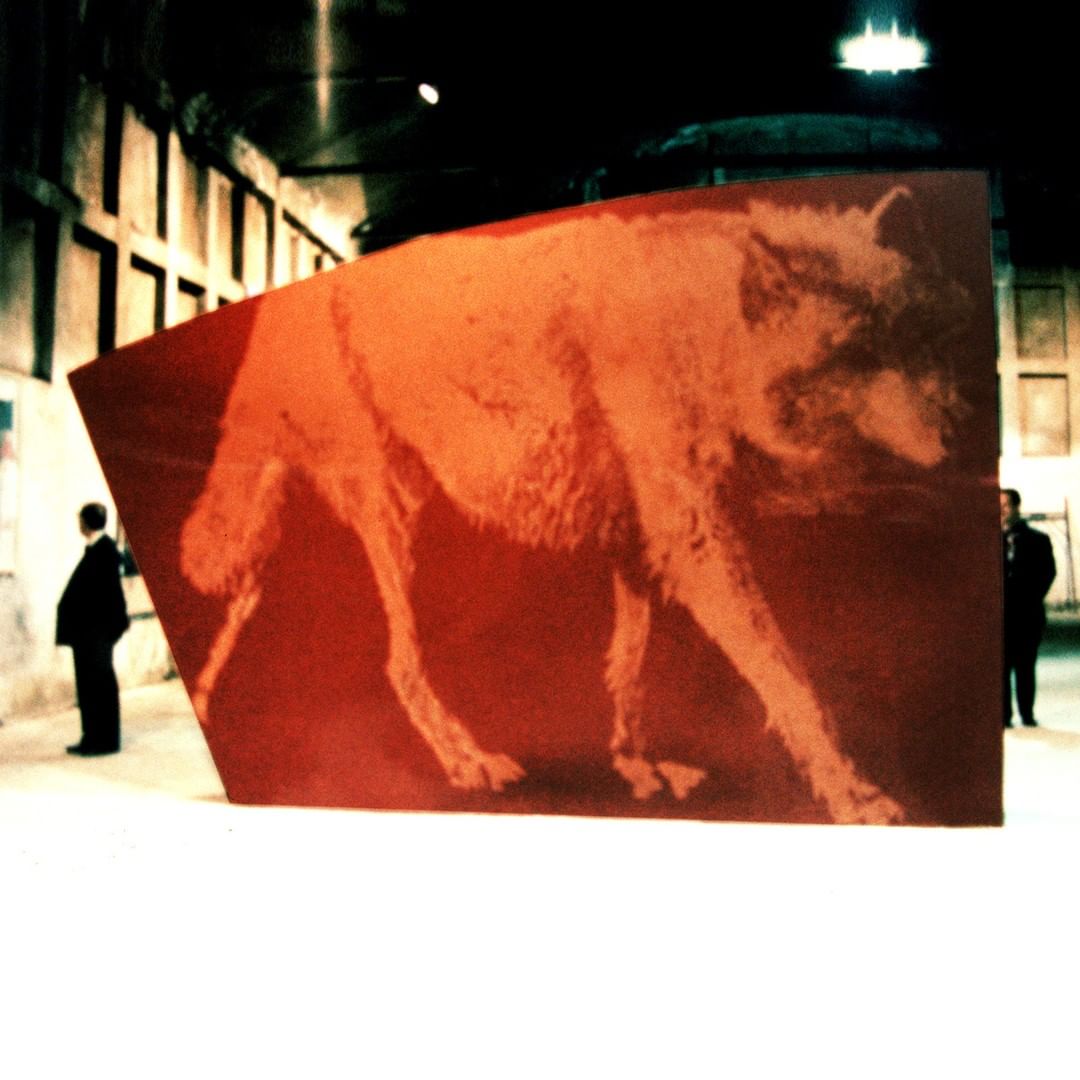
Lupus Viator, 1993 – Pescara, Italy⠀
Painting – Darya von Berner⠀
Fuori Uso⠀
Photo: Grazia Branco⠀
⠀
This large-scale painting of a walking wolf (Lupus Viator) was the first in the series. It was shown for “Fuori Uso” (1993), an annual contemporary art exhibition that takes place in Pescara (Italy).⠀
⠀
Curated by Achille Bonito Oliva⠀
⠀
The project Lupus Viator (latin: wolf walking) began as a series of monumental painted installations of an ephemeral nature and realised in situ. Later the project continued to evolve over a period of 7 years. It travelled to 7 different countries worldwide. ⠀
Taking into consideration its extensive duration, as well as its territorial movements, from country to country, Lupus Viator can be understood almost like a mythical pilgrimage, which covers the trails and places, where wolves have formerly roamed in abundance, before the species has widely become extinct.
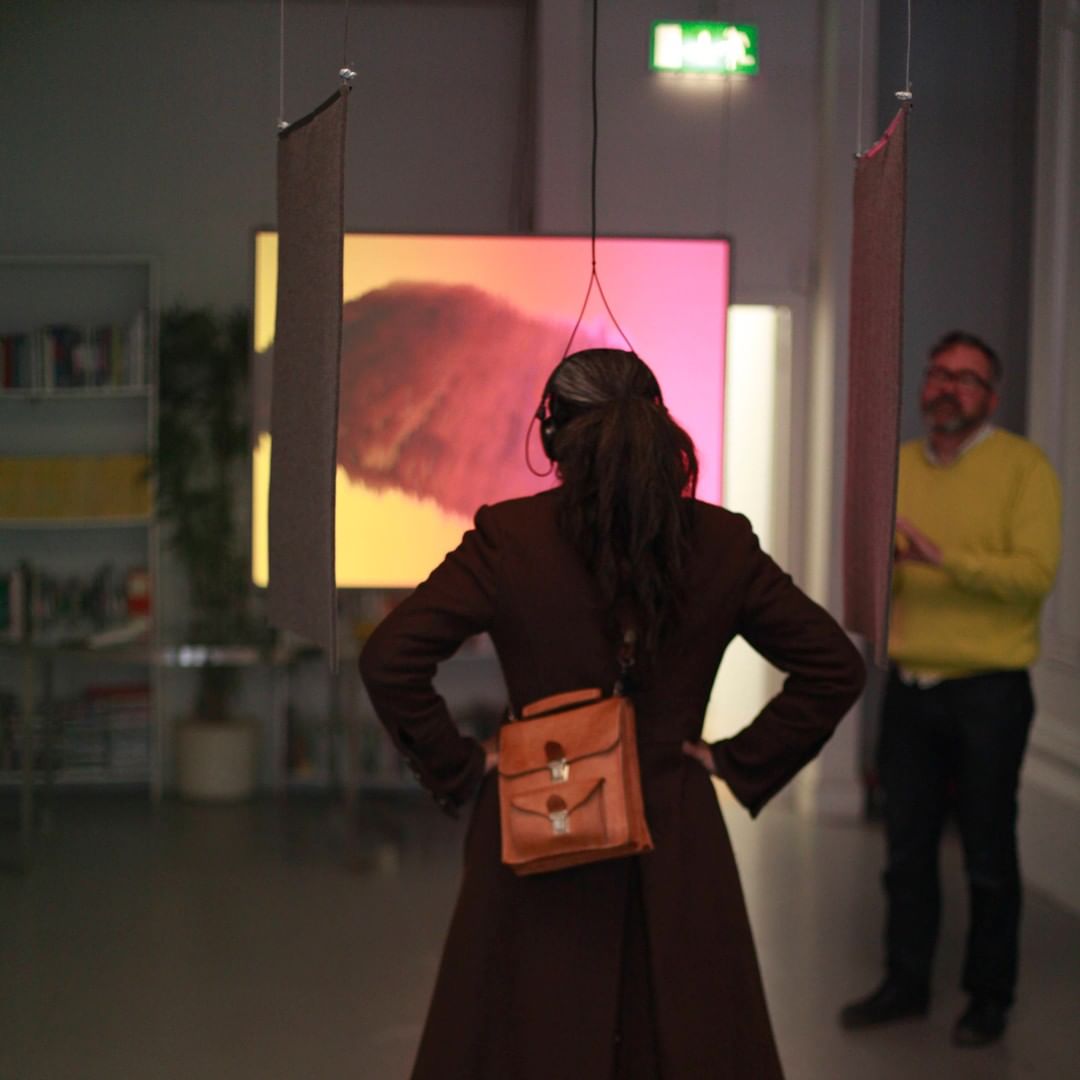
Marchas de Elefantes, 2013 – Limerick⠀
Multi-media installation, Darya von Berner⠀
⠀
Prequel Programme⠀
Ormston House, Limerick, 2013⠀
@ormston_house @cornellbirds⠀
⠀
‘Intelligent Elephant’ show graphically the infrasonic acoustic of elephant communication, with elephant calls of frequencies below the lower limit of human hearing (20 Hz). This special communication, serves elephant herds to coordinate themselves and can travel over distances of up to 10 kilometres. It was discovered by the bioacoustics researcher Katy Payne in 1984. Hereby very complex information is communicated acoustically, including emotive state, physical characteristics, intention, and perhaps reference to abstract concepts.⠀
⠀
sound recording and visuals with kind permission by:⠀
Elephant Listening Project *⠀
The Cornell Lab of Ornithology⠀
with special thanks to Peter Wrege⠀
⠀
* Elephant Listening Project, uses acoustic methods to study and aid in the conservation of forest elephants in Central Africa.⠀
⠀
Curators: Joan Stack & Paul Quast⠀@elephantlisteningproject

Marchas de Elefantes, 1998 – Madrid⠀
Video, Darya von Berner⠀
⠀
Mercado de Fuencarral⠀
Madrid, 1998⠀
Duration: 0:44, loop⠀
⠀
At the Mercado de Fuencarral (Madrid), Marcha de Elefantes was shown in the format of a multi-media installation. On several monitors, in and outside of the market, the video of an elegant couple walking in front of a homeless, was shown on a loop. Again, the work emphasized the notion of habitat loss and its problematic in the context of a city.⠀
⠀
Curated by: Eugenio Ampudia⠀
⠀
Production: Laagencia (Vicente Matallana)⠀
⠀
The project Marcha de Elefantes, is a metaphor of walking: the walk of all the wild animals and people which have lost their habitat and homes, uprooted and forced to leave their place of origin.⠀
⠀
The work began as a series of large-scale murals, but later the wall-based work was complemented by sculptures, videos and also performances.⠀
@elephantlisteningproject
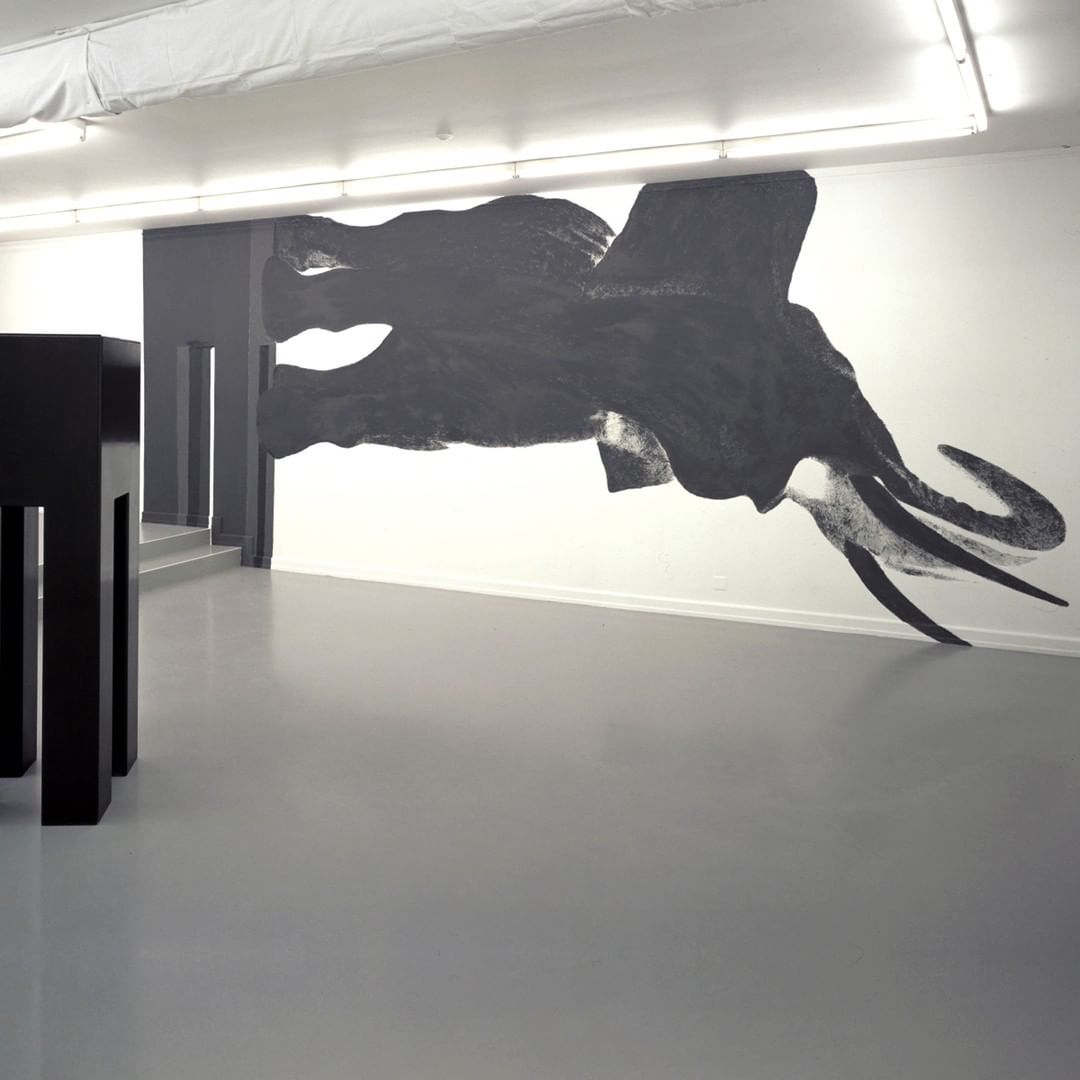
Marchas de Elefantes, 1997 – Basel⠀
Wall Painting, Darya von Berner⠀
⠀
Galeria Triebold⠀
⠀
Basel, 1997⠀
Wall painting, installation and sculpture⠀
⠀
The windows and beams of the gallery were covered with fabric, mattresses, wardrobes, chairs and other objects, as if a tornado had sucked everything into the gallery space. One of the gallery walls showed a large-scale mural of an elephant, tilted horizontally. All concentration was focused on the trumpeting of this elephant, which has not got a floor to stand on anymore.⠀
⠀
Text: Hubertus von Amelunxen⠀
⠀
The project Marcha de Elefantes, is a metaphor of walking: the walk of all the wild animals and people which have lost their habitat and homes, uprooted and forced to leave their place of origin.⠀
⠀
The work began as a series of large-scale murals, but later the wall-based work was complemented by sculptures, videos and also performances.⠀
@elephantlisteningproject
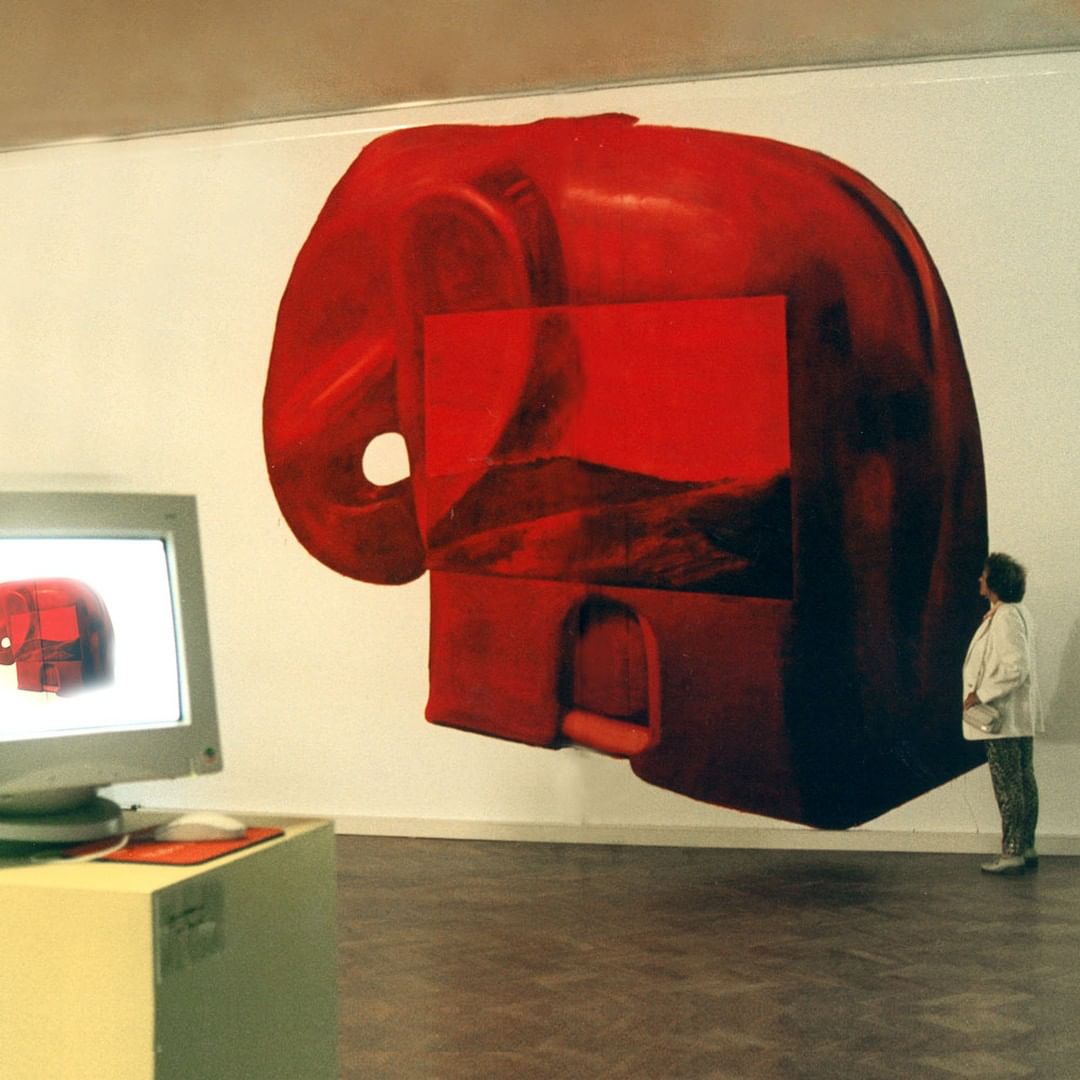
Marchas de Elefantes, 1997 – Amsterdam⠀
Wall Painting and web site, Darya von Berner⠀
⠀
Stedelijk Museum, World Wide Video Festival⠀
Amsterdam, 1997⠀
⠀
@stedelijkmuseum⠀
⠀
In 1997, Tom van Vliet (director of the World Wide Video Festival, Amsterdam) selected Marcha de Elefantes for an exhibition at the Stedelijk Museum in Amsterdam. The work consisted of a webpage, showing a red toy elephant. Reflected on the surface of the elephant, one could see a sequence of images of miserable shacks, along a highway of south Madrid. The same elephant was then painted in a large format onto the wall of the museum, and the same sequence of images was projected on to the painting. The intention of the work, was to give a symbolic space to all those who have lost their homes⠀
⠀
–⠀
⠀
The project Marcha de Elefantes, is a metaphor of walking: the walk of all the wild animals and people which have lost their habitat and homes, uprooted and forced to leave their place of origin.⠀
⠀
The work began as a series of large-scale murals, but later the wall-based work was complemented by sculptures, videos and also performances⠀
@elephantlisteningproject
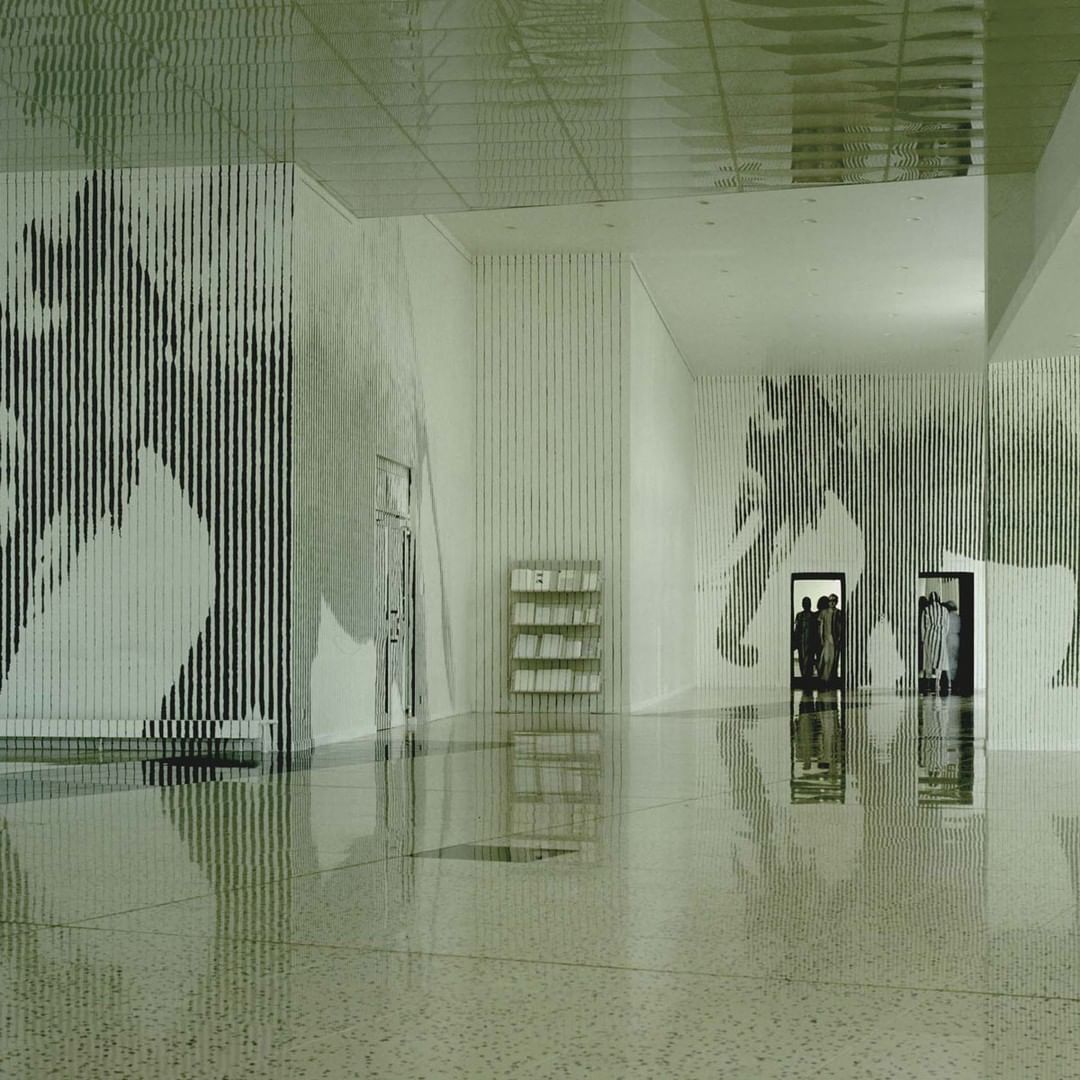
Marchas de Elefantes, 1997 – Mannheim⠀
Wall Painting, Darya von Berner⠀
⠀
Galeria Angelo Falzone⠀
Mannheim, Germany, 1998⠀
Wall painting, objects and performance⠀
Foto: Claus Stolz and Andreas Winkler⠀
⠀
The most impressive of this series of ephemeral paintings, took place in a gallery space of almost 1000 m2. For this painting and performance, von Berner relied on the generous help of five volunteers.⠀
⠀
For the performance the helpers were painted in the same way like the ephemeral mural, to somewhat visually become a fragment of the great elephant, just like in the well-known Hindu fable, in which six blind men, explain from their fragmented and partial viewpoint, how an elephant is. But none of them achieves to give a vision of the elephants totality.⠀
⠀
In our society elephants appear in form of toys, logos, cartoons and also documentaries, all of which are partial visions, which makes it impossible to perceive what the presence of a real elephant in his natural habitat can really transmit, moreover we can not really understand the significance of the extinction of this animal and its natural habitat.⠀
⠀
The project Marcha de Elefantes, is a metaphor of walking: the walk of all the wild animals and people which have lost their habitat and homes, uprooted and forced to leave their place of origin.⠀
⠀
⠀
The work began as a series of large-scale murals, but later the wall-based work was complemented by sculptures, videos and also performances.⠀
⠀
@elephantlisteningproject
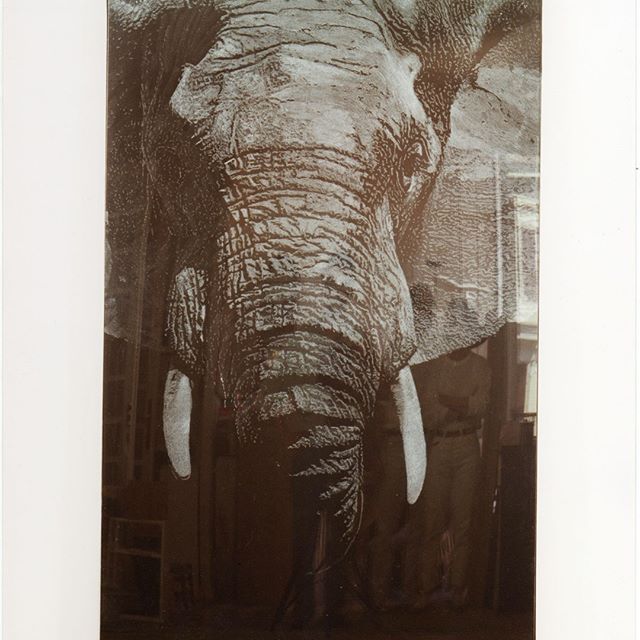
Marchas de Elefantes, 1996 – Barcelona⠀
Wall Painting, Darya von Berner⠀
⠀
Galeria Metropolitana de Barcelona⠀
Barcelona, 1996⠀
Photo: Santi Viladrich⠀
⠀
At the Gallery Metropolitana (Barcelona) the large-scale mural, showed this time only large fragments of the body of an elephant.⠀
⠀
The project Marcha de Elefantes, is a metaphor of walking: the walk of all the wild animals and people which have lost their habitat and homes, uprooted and forced to leave their place of origin.⠀
⠀
The work began as a series of large-scale murals, but later the wall-based work was complemented by sculptures, videos and also performances.⠀
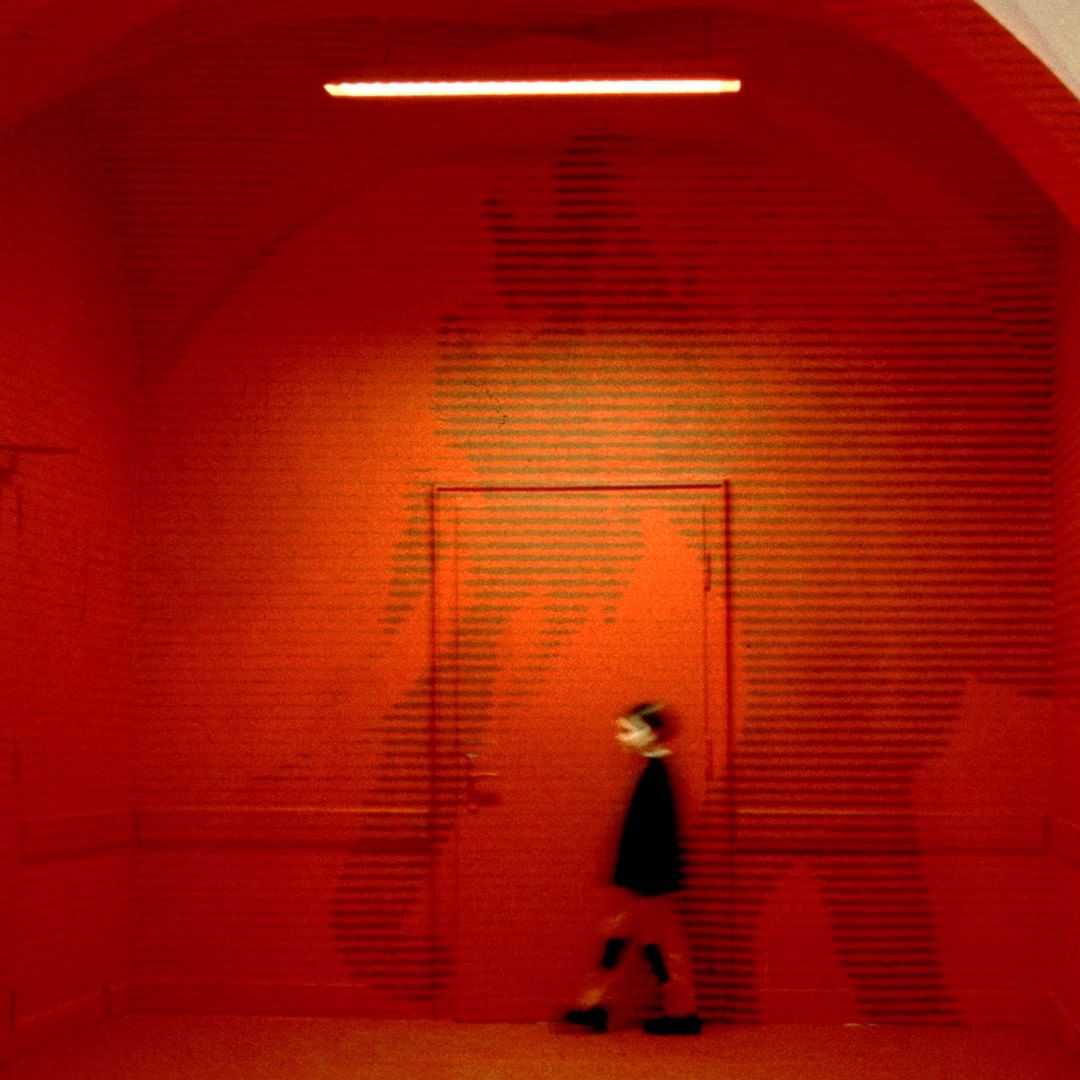
Marchas de Elefantes, 1996 – Köln⠀
Wall Painting, Darya von Berner⠀
⠀
Art Special Hansa⠀
Köln, 1996⠀
⠀
⠀
Darya von Berner showed her monumental mural Marcha de Elefantes, as part of Art Special Hansa (Cologne).⠀
⠀
Curated by: Uta M. Reindl and Georg Dietzler⠀
⠀
⠀
The project Marcha de Elefantes, is a metaphor of walking: the walk of all the wild animals and people which have lost their habitat and homes, uprooted and forced to leave their place of origin.⠀
⠀
The work began as a series of large-scale murals, but later the wall-based work was complemented by sculptures, videos and also performances.⠀

Marchas de Elefantes, 1994 – Assisi⠀
Wall Painting, Darya von Berner⠀
⠀
Rocca Maggiore Sistema Museo di Perugia⠀
Comune di Assisi⠀
Assisi, Italy, 1994⠀
Wall painting⠀
Photo: Mika Schiffer @mikaschiffer⠀
⠀
The second installation of Marcha de Elefantes took place at the Sistema Museo/ Rocca Maggiore di Perugia (Assisi, Italy). At this occasion the ephemeral painting of this monumental elephant march, was realized on a palisade, that surrounded the castle.⠀
⠀
Curator: Giulietta Speranza⠀
Performance dance: Gisella Zanmatti⠀
⠀⠀
The project Marcha de Elefantes, is a metaphor of walking: the walk of all the wild animals and people which have lost their habitat and homes, uprooted and forced to leave their place of origin.⠀
⠀
The work began as a series of large-scale murals, but later the wall-based work was complemented by sculptures, videos and also performances.⠀
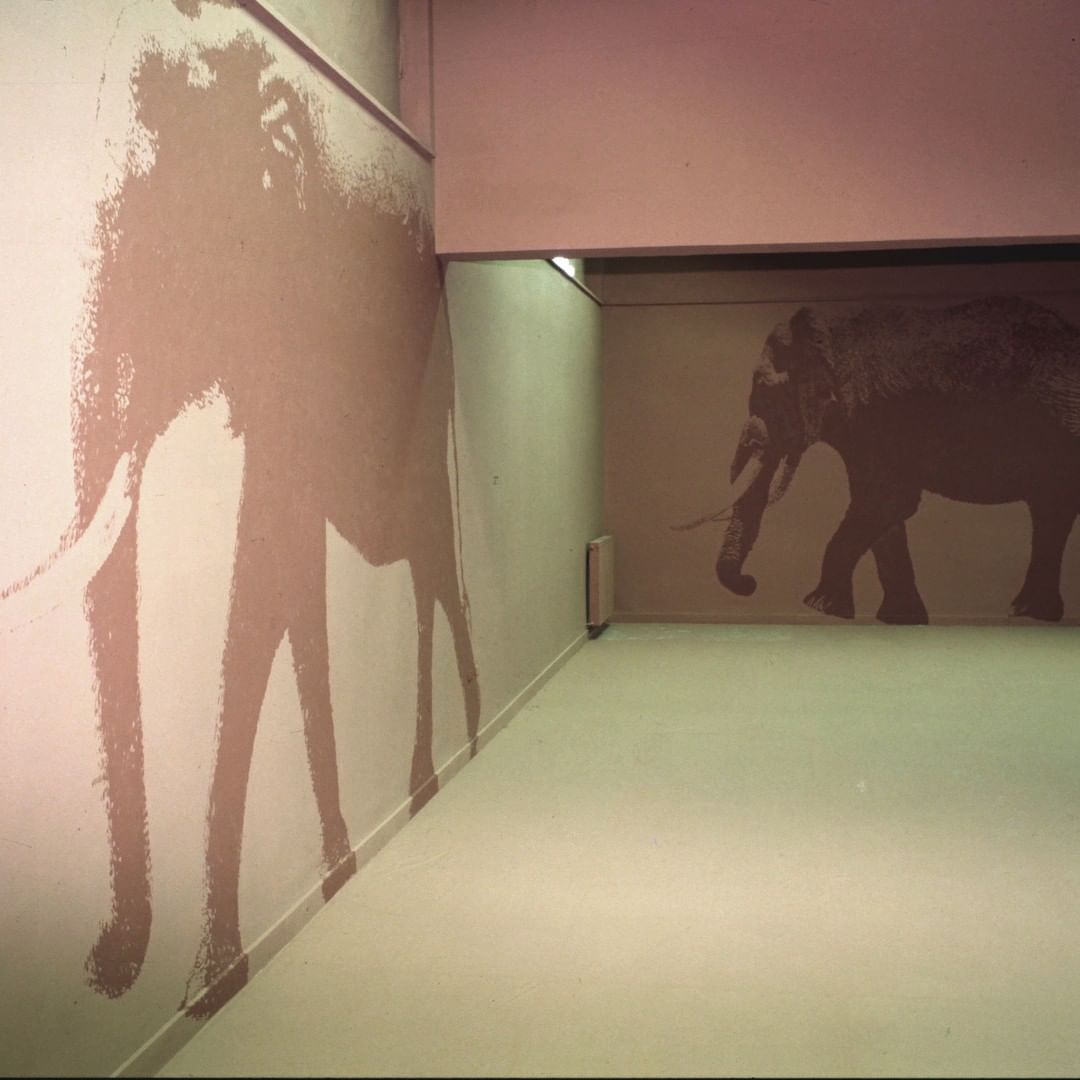
Marchas de Elefantes, 1992 – Gibellina⠀
Wall Painting, Darya von Berner⠀
⠀
Photo: Grazie Blanco⠀
@fondazione_orestiadi⠀
Gibellina, Sicily, Italy, 1992⠀
⠀
Marcha de Elefantes was presented at the Paesaggio con Rovine, Gibellina,Sicily. For the first time Darya von Berner painted a large-scale mural of several elephants, that seemed to walk around the room painted in red.⠀
⠀
Curators: Achille Bonito Oliva and Giuliana Stella⠀
⠀
#achillebonitooliva⠀
⠀
The project Marcha de Elefantes, is a metaphor of walking: the walk of all the wild animals and people which have lost their habitat and homes, uprooted and forced to leave their place of origin.⠀
⠀
The work began as a series of large-scale murals, but later the wall-based work was complemented by sculptures, videos and also performances.⠀

Dimitri Aleksandrovich Prigov “Citizens! The Alps are looking into my window and sending greetings to you all! #poet #criticalthinkers #culture #nature #documenta14 #kassel

We would have learn from Prinz Gholam about the reservoir of images that inspire our behavior. @prinzgholam @pierre.bal.blanc #art #artist #performanceart #criticalthinkers #culture #nature #documenta14 #athens #kassel

Angela Melitopoulos narration of political geographies. #filmmaker #artist #art #culture #nature #criticalthinkers #documenta14 @kassel

We learn from Ahlam Shibli photographic reportages and Richard Sennett book “Together” that people’s capacities for cooperation are far greater and more complex than institutions allow them to be. #art #culture #nature #criticalthinkers #documenta14 @sennettrichard @ahlam.shibli #kassel

Any form can be turne into an instrument. Our instrumentalized body can be also an instrument, that is what we learn from Nevin Aladag. #artist #culture #nature #demodernisation #documenta14athens #athens

Lois Weinberger use wild plants’s to break through the city’s surface, breaking our idea of nature. #art #artist #culture #nature @loisweinberger #documenta14 #kassel #serpaisaje

“Place where the living reveals itself above the orderly” Lois Weinberger #nature #culture #artist #art #criticalthinkers #documenta14 @loisweinberger #demodernisation

Ibrahim Mahama creates a new cartography of Kassel. #artist #nature #culture #documenta14 #demodernisation #kassel

The politics of spaces of Ibrahim Mahama. The artist uses tattered jute sacks obtained from traders in exchange for new ones. His currency is memory. @ibrahimmahama3 #artist #art #nature #culture #criticalthinkers #documenta14 #kassel

Pierre Huyghe forge a new physical relationship between the viewer and the art object. #sculpturemünster #art #artist #culture #nature #animals #criticalthinkers #munster

Anna and Lawrence Helprin
Dance Deck, California (1954-2017) Anna Hakprin’s dance deck was built in collaboration with Lawrence, her husband, a landscape architect, urban designer, and ecologist, between 1953 and 1954, in the redwood area of Kentfield, California. Dance based on observation and awareness. #art #dance #nature #culture #criticalthinking #california #documenta14 #kassel

Benjamin Patterson’s work has a delicate sense of humor and subtle yet profound political deliberations, I just love his work! #documenta14 #kassel #art #artist #politcalart #criticalthinkers #culture #nature #serpaisaje

Hreinn Friõfinnsson Fourth house of the house project since 1974. #sculptureprojectsmünster #nature #culture #artist #art #serpaisaje #munster

The body -one’s own and that if others- is gaining importance in the context of increasing digitalization, and also within the new economies emerging as a result. In the digital realm it disappears; in reality it is enhanced with digital devices and high-tech prostheses.
Kasper König, Brittany Peters, Marianne Wagner. @alexandrapirici “Leaking Territories” #sculptureprojectsmünster #art #artist #performance #culture #nature #politics #criticalthinkers

July 27, 2017 (5:03 pm)

All the flags would have to be mourning, can we still imagine a white flag? #flag #universalflag #universalcloudflag #denhague #peacepalace #protectionenvironnement #humanright #westernflag #installation #art #contemporaryart #publicart #cloudflag #alexandervonhumboldt #carbonfootprint #ecosystemright #environmentalchallenges #rightofnature #artist #environmentartist #culture #nature @edgarg @ariadnacantis

A portrait of nature, I grew up with the impact of culture on nature and nature on culture.